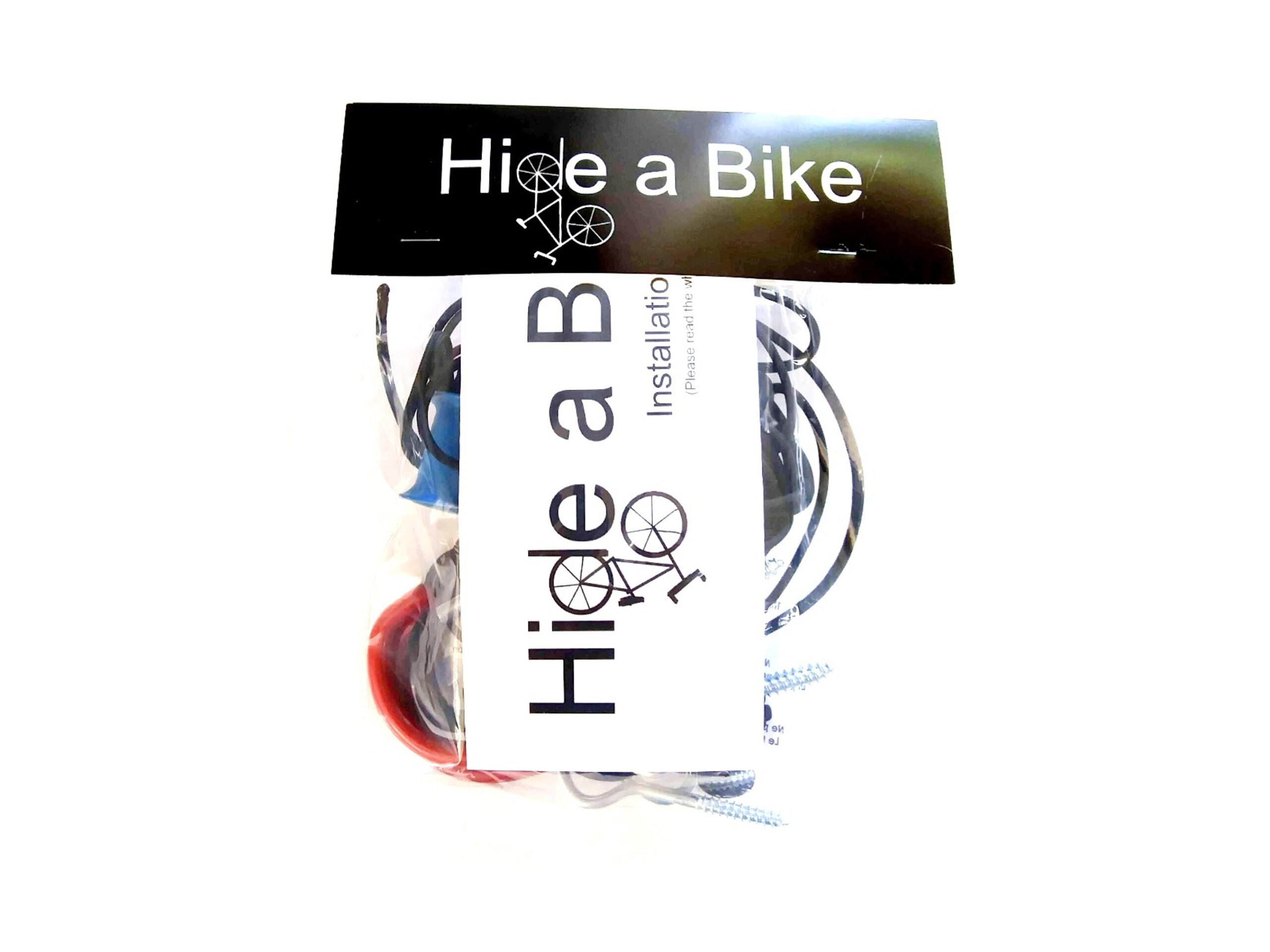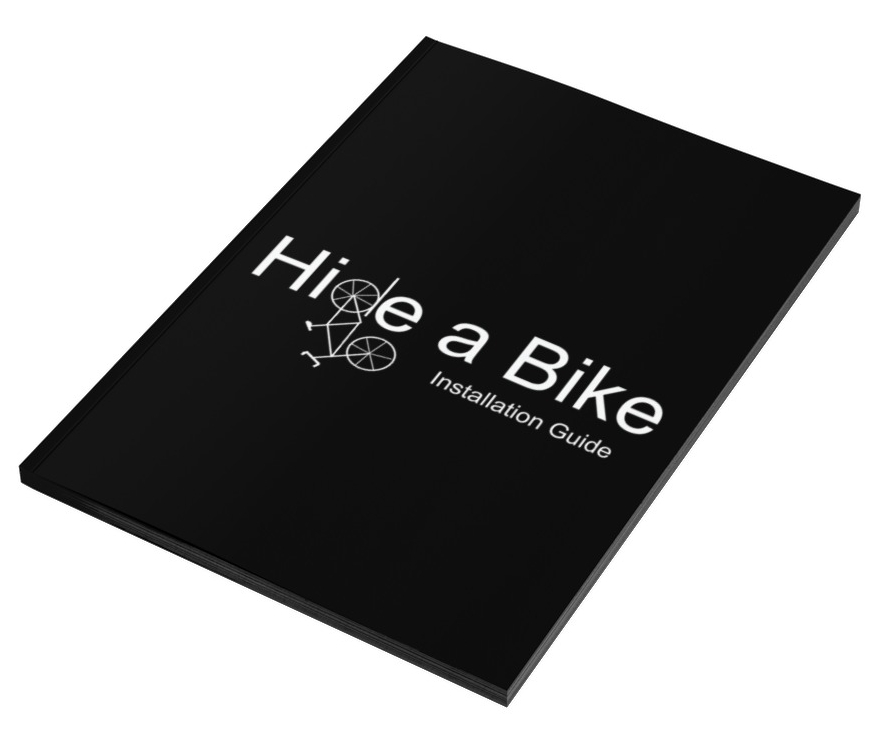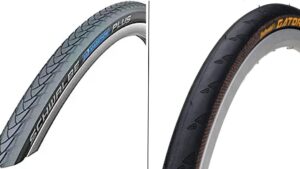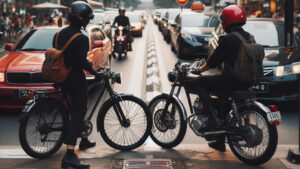How To Cycle With Your Dog Safely

Discover how to bike safely with your dog, from gear selection to post-ride care. Enhance your rides with your furry friend.
*This article may contain affiliate ads that help to support this site*
Riding a bicycle with your furry friend is more than just an outdoor activity; it’s an opportunity to forge a deeper bond and share memorable adventures together. Whether you’re a seasoned cyclist or a beginner, the idea of pedaling alongside your dog is undoubtedly enticing. However, embarking on this journey requires careful consideration of safety and a methodical approach to your dog’s stamina.
In this guide, we’ll explore the world of bicycle riding with your canine companion, focusing on two key aspects: safety and gradually building your dog’s endurance. By the time you finish reading, you’ll be equipped with the knowledge and skills needed to make your rides enjoyable and risk-free. So, fasten your helmet, leash up your pup, and let’s hit the road together on this exciting journey of cycling with man’s best friend.
1. Safety Preparations
Before you embark on your bike rides with your dog, it’s crucial to prioritize safety, not only for yourself but for your furry companion as well. Here are the key safety preparations you should consider:
Proper Dog Harness and Leash: Begin by ensuring your dog is equipped with a secure and comfortable harness. Avoid using collars, as they can pose risks to your dog’s neck during sudden movements. Opt for a harness designed specifically for biking, which evenly distributes the force and minimizes strain. Attach a leash to the harness, giving you better control and stability during rides.
Choose the Right Bike: Select a bike that provides stability and control. A bike with wider tires and a lower center of gravity is preferable for riding with a dog. Make sure your brakes and gears are in good working order, and your tires are properly inflated.
Safety Gear for Yourself: Don’t forget your own safety. Always wear a helmet and consider protective gear like gloves and knee/elbow pads. It’s not just about your dog’s well-being; your safety ensures you can continue to care for your four-legged friend.
Pre-Ride Check: Before each ride, inspect your bike, harness, leash, and any safety attachments. Ensure everything is in proper working condition, with no signs of wear and tear.
By prioritizing safety preparations, you’ll set the foundation for a secure and enjoyable biking experience with your dog. With these precautions in place, you’re ready to start your journey while minimizing risks and ensuring the well-being of both you and your faithful companion.
2. Training And Socialization
Training your dog and helping them adapt to the experience of riding alongside your bicycle is a fundamental step in ensuring a safe and enjoyable adventure. Here’s what you need to know:
Introduction to the Bike: Start by introducing your dog to the bike while it’s stationary. Let your dog become familiar with the bicycle, its size, and its components. Allow them to sniff and explore, making it a positive and non-threatening experience.
Leash Training: Teach your dog to walk calmly on a leash beside you before introducing the bicycle. Ensure they understand basic commands like “sit,” “stay,” and “heel.” These commands will be essential during rides to maintain control and safety.
Gradual Progress: Once your dog is comfortable with the bike and walking on a leash, begin to incorporate short walks while holding the bike alongside. Gradually introduce them to the moving bicycle in a controlled environment such as a quiet, empty parking lot or a deserted path. Encourage your dog to stay on one side and maintain a consistent pace.
Socialization: Familiarize your dog with other cyclists, pedestrians, and common distractions they might encounter on a ride. Socializing your dog will help reduce anxiety and improve their behavior when you’re out and about.
Positive Reinforcement: Use positive reinforcement, praise, and treats to reward your dog for good behavior during these training sessions. Make every interaction with the bike a positive experience for your dog.
By taking the time to train and socialize your dog properly, you’ll ensure that they are comfortable and well-behaved while cycling. This will lead to a safer and more enjoyable experience for both you and your furry companion on your bike rides.
3. Building Your Dog's Stamina
Building your dog’s stamina is a crucial aspect of cycling together. Dogs, like humans, need to gradually develop their physical endurance to ensure their well-being during longer rides. Here’s a step-by-step guide on how to accomplish this:
Assess Your Dog’s Current Fitness Level: Consider your dog’s age, breed, and size when determining their starting point. Puppies and smaller breeds will have different needs than larger, more active dogs. Consult with your veterinarian if you have concerns about your dog’s fitness.
Start with Short Walks: Begin with short, leisurely walks with your dog alongside the bicycle. These initial outings should be relaxed, helping your dog adapt to the new experience.
Increase Distance Gradually: Over time, gradually increase the distance of your rides. For example, start with 15-20 minutes and then extend the rides by 5-10 minutes each week. Monitor your dog’s behavior and energy levels during and after rides.
Consistency is Key: Consistency in training and exercise is vital. Plan regular rides to help your dog build endurance and get accustomed to this activity.
Pay Attention to Rest Days: Just like humans, dogs need rest days to recover. Ensure your dog has days off from riding to rest their muscles and joints. On these days, you can engage in less physically demanding activities or even opt for indoor mental stimulation games.
Hydration and Nutrition: Keep your dog well-hydrated during rides, especially in warmer weather. Offer water breaks, and consider portable water bottles for dogs. Maintain a balanced diet to support your dog’s overall health and energy levels.
Be Mindful of Weather: Pay attention to weather conditions. Dogs are sensitive to extreme heat and cold. Avoid cycling in adverse weather, and protect your dog from the elements.
Veterinary Check-ups: Regular check-ups with your veterinarian will help ensure your dog’s overall health and fitness. Discuss your cycling plans and ask for advice specific to your dog’s needs.
By following these steps and gradually increasing the distance and intensity of your rides, you’ll help your dog build the necessary stamina for safe and enjoyable cycling adventures. Remember that every dog is unique, so adapt the training to suit your dog’s individual capabilities and preferences.

Hide A Bike Kit
Is your garage starting to become a mess? Save space by storing your bikes flat against the ceiling.
4. Safe Riding Techniques
To have a safe and enjoyable biking experience with your dog, it’s essential to follow proper riding techniques and be well-prepared for any challenges you may encounter along the way. Here are some guidelines for maintaining control, safety, and having a smooth ride:
Maintain Control: Ensure you have full control of your bike. Keep a steady pace and avoid sudden acceleration or deceleration. Maintain a firm grip on the handlebars.
Teach Verbal and Hand Signals: Use clear verbal commands and hand signals to communicate with your dog. Signals like “slow,” “stop,” and “turn” help your dog understand your intentions. Consistency is key for effective communication.
Stay on the Same Side: Teach your dog to stay on one side of the bike to prevent tangling of the leash. Most riders prefer having their dog on the left side for uniformity, but choose a side that’s comfortable for both you and your dog.
Maintain a Safe Distance: Keep a safe distance between your bike and your dog to prevent any collisions or entanglements. This distance will depend on your dog’s size and behavior.
Be Prepared for Sudden Movements: Dogs can be unpredictable, so be ready for sudden movements or distractions. Always be vigilant and prepared to respond quickly.
Regularly Check Your Dog: Glance at your dog regularly during the ride to ensure they are comfortable and not displaying signs of fatigue or distress. Check your dog’s paws every once in a while for cracking or stuck thorns.
Choose Safe Routes: Pick routes that are dog-friendly and less congested. Avoid busy streets and opt for bike paths, trails, or quieter roads.
Address Common Challenges: Understand and address common challenges, such as barking at other dogs, chasing squirrels, or reacting to unfamiliar noises. Train your dog to remain focused and obedient during rides.
Remember, practice makes perfect. Take time to hone your riding techniques and build a strong rapport with your dog while on the bike. Safety and communication are the keys to an enjoyable experience for both you and your loyal companion.
5. Post Ride Care
Ensuring your dog’s well-being doesn’t end when the bike ride is over. Post-ride care is just as important as the ride itself to maintain their health and happiness. Here’s what you should do to take care of your furry friend after your cycling adventure:
Hydration: After the ride, offer your dog water to keep them well-hydrated. Even during the ride, make sure to provide water breaks, especially on hot days.
Cool Down: Allow your dog to cool down. Take a few moments to walk or jog at a slower pace to help their body temperature return to normal.
Check for Fatigue and Injuries: Examine your dog for signs of fatigue or injuries. Look for limping, soreness, or any unusual behavior. If you notice anything concerning, consult your veterinarian.
Rest: Give your dog time to rest and recover. Allow them to relax in a comfortable, cool, and quiet space. A cozy bed or blanket can be especially comforting.
Nutritional Needs: Consider feeding your dog a balanced meal after the ride to help with recovery and provide them with the necessary nutrients. Consult your veterinarian for guidance on post-exercise nutrition.
Regular Grooming: After the ride, check your dog’s coat and paws for debris or irritants. Regular grooming and paw maintenance can help prevent discomfort.
Love and Attention: Lastly, offer plenty of love and attention. Positive reinforcement and bonding time after a ride help create a positive association with cycling for your dog.
By following these post-ride care steps, you’ll ensure that your dog remains happy, healthy, and ready for your next cycling adventure. Remember, each dog is unique, so pay attention to their individual needs and preferences, and adjust your post-ride routine accordingly.

Hide-A-Bike Installation Guide
If you want to put together a Hide-A-Bike kit for yourself, just download these easy to follow, step-by-step directions, complete with a full hardware and parts list.
Conclusion
In the world of cycling with your faithful four-legged companion, the journey is just as important as the destination. Riding a bicycle with your dog offers not only the thrill of the open road but also the opportunity to create lasting memories and strengthen your bond. However, safety and preparation are paramount. From safety equipment to gradual stamina building, we’ve explored the essential elements that ensure a secure and enjoyable experience for both you and your dog. Training, communication, and post-ride care all play vital roles in making your adventures a success.
As you embark on this exciting journey of cycling with your dog, remember that patience, consistency, and love are your most valuable tools. So, gear up, hit the road, and cherish the precious moments you’ll share with your furry friend, all while keeping safety and well-being as your top priorities. Happy cycling!
Share This Article With A Friend
Did You Read This Whole Article?

You deserve a gift! Enter your email to receive a FREE copy of the Hide-A-Bike Installation Guide! And once a month we will send you a newsletter with the best deals on the internet for bicycle gear and accessories.
About Hide A Bike

Save space by keeping your bike flat against the ceiling with the original easy and convenient bicycle storage solution.
Thank You For Visiting!

You deserve a gift! Enter your email to receive a FREE copy of the Hide-A-Bike Installation guide. And once a month we will send you a newsletter with links to our best finds on bicycle gear and accessories.
Share This Article:
Most Popular Articles:
Article Categories:
Related Articles:

How To Stay Safe When Riding Your Bike

How To Share The Road Safely With Motorists And Pedestrians






